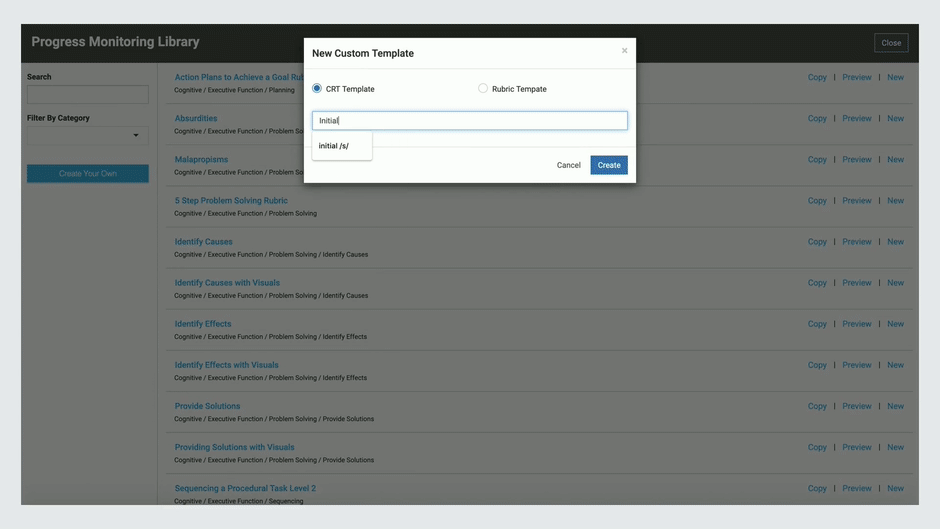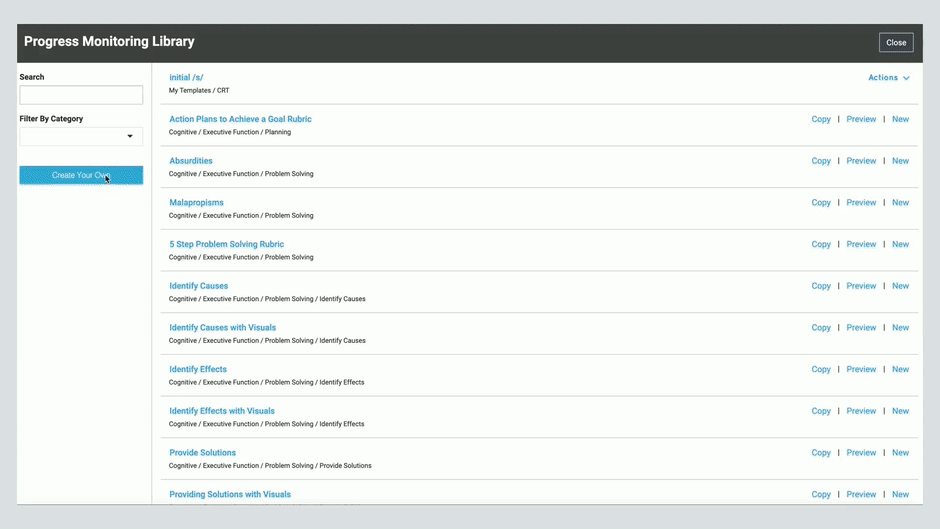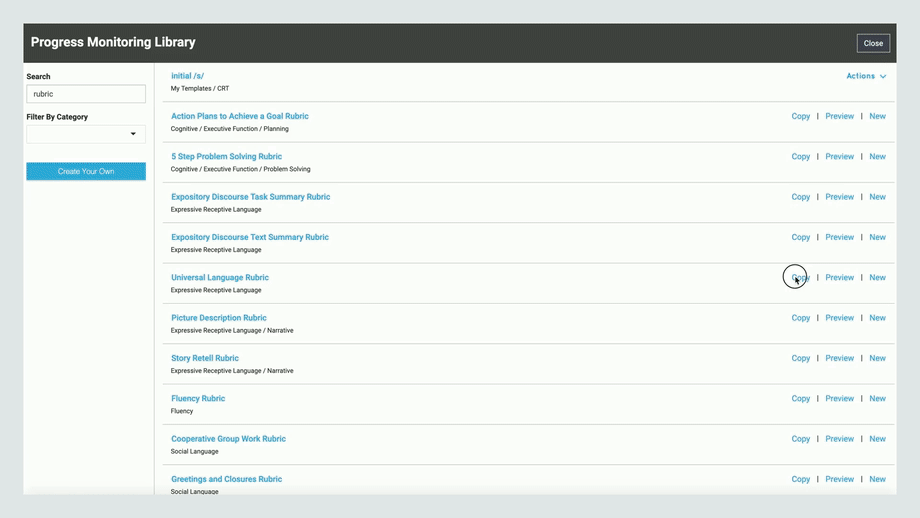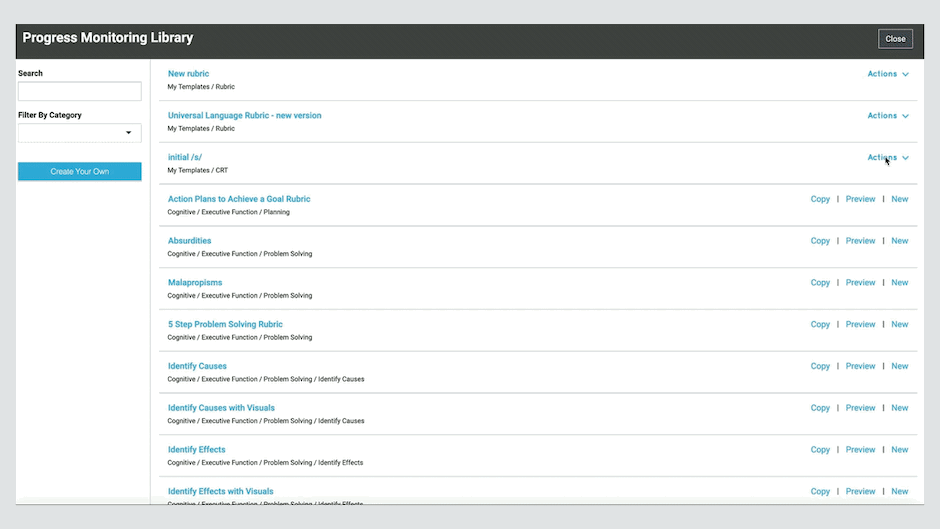
Build Your Own Progress Monitoring Tests and Rubrics
April 26, 2019
We are so excited to announce that you can now create custom progress monitoring tests and rubrics! One thing we knew early on was that it was impossible for us to think of every single goal a therapist may target. While we tried to create a comprehensive bank of built-in criterion referenced tests (CRTs) and rubrics there will always be a situation when you have a unique goal that requires a specific test to progress monitor. Do you need a test with specific vocabulary from the curriculum? Create it! Need a rubric to address a social language difficulty you have never seen before? Build it!
Custom CRT and Rubric feature from SLP Toolkit on Vimeo.
We will never go back to our old ways of progress monitoring again! Using CRTs and rubrics not only make progress reports more efficient but the data is more consistent and accurate!
You now have the flexibility to meet every student’s needs! Let us show you how:
-
To start from scratch, click the ‘create your own’ button inside the progress monitoring feature.
-
To create a test of stimulus items in which a yes/no response will be scored select ‘CRT Template’.
-
To create a rubric which is useful for collecting data on more abstract goals select ‘Rubric Template’.
-
Name the template and select ‘create’.
-
If you need an image at the top of the test drop the image into the box at the top left.
-
Enter any notes or instructions you want to include. This text box at the top is also great for adding a story or text that does not require scoring.
-
To add an image next to the stimulus item check browse or drop the image into the box next to the question.
-
Next, add the stimulus item or question. You can format the text, change the color of the text, and/or add bullet points.

-
Click the plus sign to add another item.
-
You can change the order of these items at any time.
-
If you are needing to create a test in which you need the frequency counter, check the box. The frequency counter is used for measuring something like intelligibility or to track responses for an articulation reading passage. Please note if you select the frequency counter you will not be able to include questions as well. You are only able to do one type of measurement in each test.
-
When you are finished with the test click ‘close’.
-
To create a rubric, select the ‘Rubric Template’. Add the number of rows and columns that you need. You can also rearrange columns and rows as well as delete them.

-
If you are wanting to make changes to an existing test or rubric click copy next to the test name in the progress monitoring library. Rename it and click ‘create’. Edit any changes you want to make and then click ‘close’.

-
Once you are ready to administer a test click ‘actions’ next to the test name. This is also where you can preview, edit, copy or delete a test. To administer the test click ‘new’. This test will now be on the student dashboard to be used for progress monitoring.

-
We are in the process of reorganizing the progress monitoring library, but for now, any tests you create will be at the top of the library.
-
Your custom tests will show up in the image viewer! Refresh your viewer after you have added a new test to the student’s dashboard and you will be able to access the images on a separate device!
We hope you will find this new feature beneficial. Our goal is to ensure that you are able to find an effective/consistent way to measure progress and individualize it to meet all of your students’ needs.



